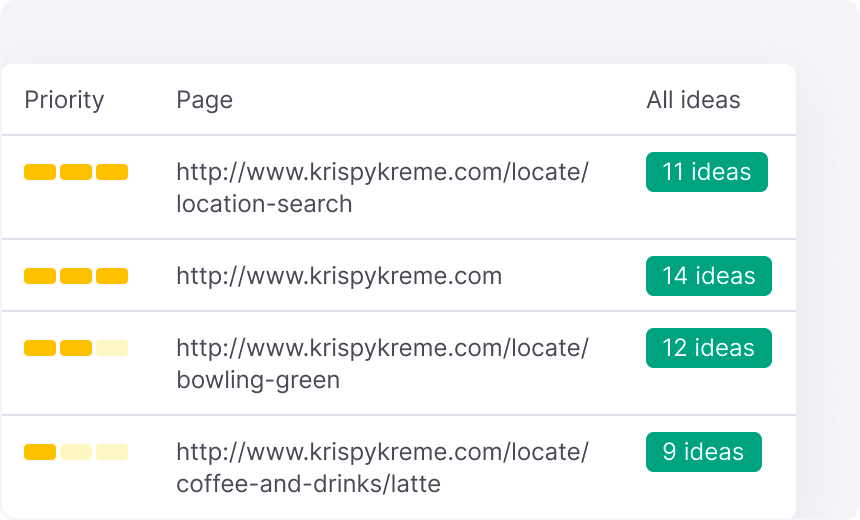A Detailed Consider What Is Not Considered a Default Medium in Google Analytics
A Detailed Consider What Is Not Considered a Default Medium in Google Analytics
Blog Article
Believing Outside the Box: Leveraging Unusual Mediums to Maximize Google Analytics Efficiency
In the realm of digital advertising, the quest for enhanced Google Analytics performance has actually ended up being a tactical important for services looking for to refine their online existence. By discovering unique mediums as opportunities of data collection, a brand-new world of opportunities arises.
Unique Information Resources

Social media systems provide valuable data on customer demographics, interests, and interaction metrics, permitting services to determine the efficiency of their social media projects and maximize content for much better efficiency. By leveraging these one-of-a-kind data sources, organizations can refine their techniques, boost targeting initiatives, and enhance overall Google Analytics efficiency.
Social Media Site Insights

Additionally, social networks analytics devices allow companies to track key efficiency signs, monitor project effectiveness, and gauge the effect of their online tasks. Understanding the demographics of fans, identifying preferred material motifs, and examining engagement degrees can help services customize their advertising strategies for better outcomes.
Offline Advertising Integration
Integrating offline advertising and marketing techniques with electronic analytics can enhance general project performance and supply an extra extensive understanding of customer behavior. what is not considered a default medium in google analytics. By connecting the void between online and offline efforts, organizations can track the impact of standard advertising and marketing channels such as print ads, television commercials, direct-mail advertising, and events on their on the internet visibility

Moreover, applying telephone call radar for offline marketing tasks allows companies to capture valuable information on client inquiries created with printed advertisements or products (what is not considered a default medium in google analytics). By examining call information together with online metrics in Google Analytics, organizations can get deeper understandings into the consumer journey and maximize advertising techniques for enhanced performance throughout all channels
IoT and Wearable Modern Technology
Utilizing IoT and wearable modern technology in digital analytics can change data collection and customer insights for organizations looking for a deeper understanding of individual actions patterns. These ingenious modern technologies provide a smooth way to collect real-time information from different touchpoints. IoT tools can track user communications with services or products, offering useful information on usage patterns and choices. Wearable technology, such as smartwatches or health and fitness trackers, can offer insights right into user tasks, wellness metrics, and also place data.
Gamification Techniques
The implementation of gamification strategies in electronic analytics presents an ingenious method to enhancing individual engagement and driving workable insights for services. By incorporating game-like elements such as factors, badges, leaderboards, and rewards right into the analytics user interface, firms can encourage users to connect much more regularly and have a peek at this website meaningfully with the data.
Gamification urges customers to explore different features of the analytics platform, discovering useful insights that might have otherwise gone unnoticed. With interactive difficulties and progression monitoring, individuals are incentivized to dig much deeper into the information, bring about raised time invested in the platform and a greater chance of discovering vital trends or patterns.
Additionally, gamification can foster a sense of competition amongst individuals, spurring them to pursue higher performance and involvement degrees. This affordable spirit can drive boosted user adoption rates and an extra detailed utilization Our site of the analytics devices available. Eventually, by leveraging gamification techniques in electronic analytics, companies can create a much more appealing and effective setting for customers, causing more educated decision-making and boosted total performance.
Final Thought
To conclude, leveraging unusual tools such as special data sources, social media sites understandings, offline advertising and marketing assimilation, IoT and wearable innovation, and gamification methods can optimize Google Analytics efficiency. By thinking outside package and checking out these different resources of information, businesses can acquire beneficial insights and improve their overall advertising and marketing approaches. It is very important for firms to continuously discover brand-new means to collect data and assess it in order to stay ahead in the useful source ever-evolving electronic landscape.
By incorporating information from resources such as client relationship monitoring (CRM) systems, social media platforms, and e-mail marketing projects, organizations can get a much more comprehensive understanding of their audience actions and engagement patterns. Social media platforms offer useful information on customer demographics, passions, and engagement metrics, enabling companies to evaluate the effectiveness of their social media campaigns and optimize material for far better efficiency. By leveraging these one-of-a-kind information resources, businesses can fine-tune their strategies, improve targeting efforts, and boost general Google Analytics efficiency.
Exploring social media understandings can supply businesses with valuable data on user demographics, rate of interests, and engagement metrics, enabling for informed decision-making and critical optimization of advertising and marketing initiatives. By thinking outside the box and checking out these alternate sources of information, organizations can get useful insights and enhance their overall advertising techniques.
Report this page